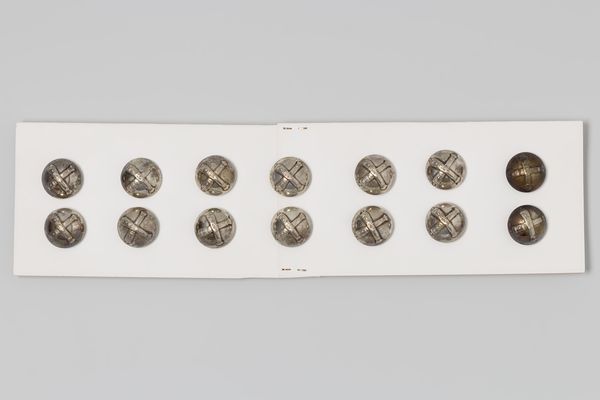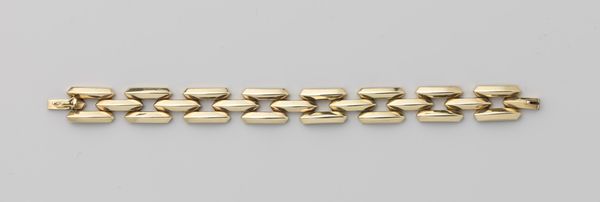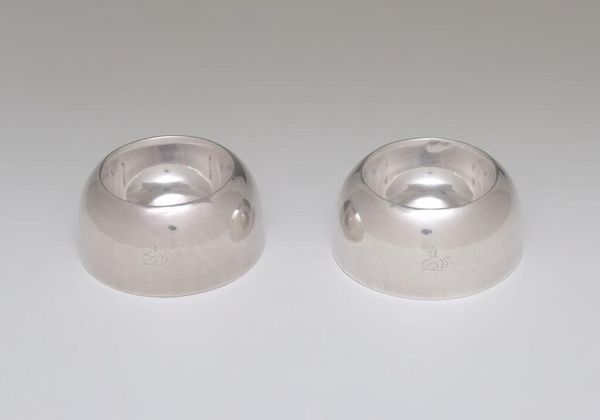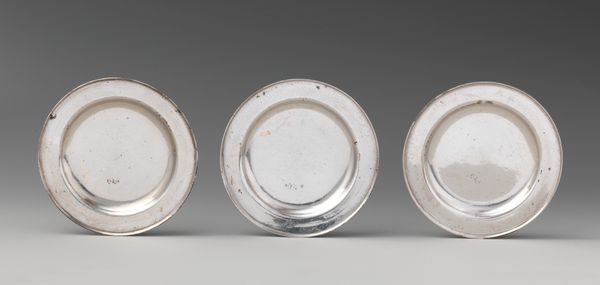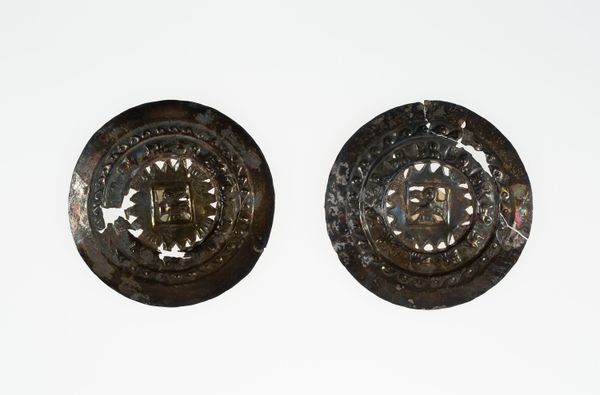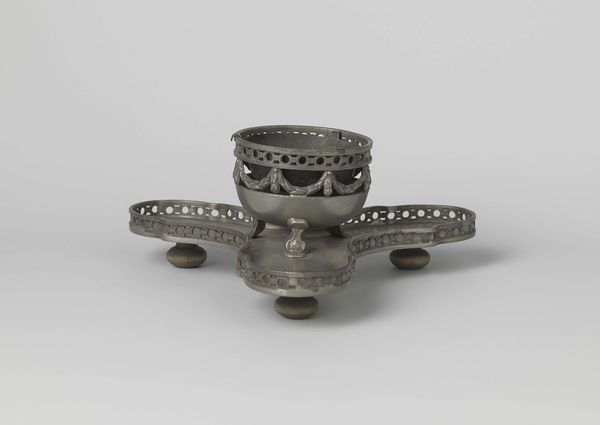
silver, metal, textile
#
silver
#
metal
#
textile
#
indigenous-americas
Copyright: Public Domain
Curator: Welcome to the Minneapolis Institute of Art. We’re standing before a striking Concha Belt created around 1950 by a Navajo, or Diné, artist. It's crafted primarily from silver. Editor: It strikes me immediately with its stark simplicity and the way the repeated circular forms create a very satisfying rhythm. There's a subdued elegance to it. Curator: Precisely. The design relies on the interplay between the individual conchas—the silver disks—and the leather strap that joins them. Observe how each concha has a central dome surrounded by decorative stamping on its border. This repetition is both visually pleasing and structurally significant, underscoring a balance of negative and positive space. Editor: Absolutely, but it’s equally important to consider the history of Navajo silversmithing. Think about how the arrival of Europeans introduced silver as a medium, and how indigenous artisans then adapted traditional designs and techniques to this new material, becoming central to Diné economy and cultural expression. Curator: Yes, the adoption and adaptation of silver highlight the artist’s skill, transforming European materials into something distinctly Diné. Note the final square-shaped buckle. It has its own details, separate from the more common conchas. It's almost as though it exists to resolve the repeating pattern on one side. Editor: And that final buckle tells a more expansive story too: these belts weren't mere ornaments, but symbols of status, traded objects, and crucial documents of intercultural exchange. Considering that, the question is not what makes them beautiful, but what they were made to represent at that particular time. Curator: I agree that understanding their history is vital, but I still find myself drawn to the formal elements, how the texture of the silver plays against the smooth leather, creating a quiet visual narrative. The use of negative space defines the rhythm itself. Editor: It really embodies the powerful way that Diné artists merged their cultural identity and visual vocabularies with borrowed resources, re-framing it all with profound symbolism. Curator: A potent intersection of form and narrative. The visual texture reveals the subtle complexities underlying such a beautiful design. Editor: The concha belt reflects so many layers of history, tradition, and exchange – it is an enduring story in silver and leather.
Comments
No comments
Be the first to comment and join the conversation on the ultimate creative platform.






